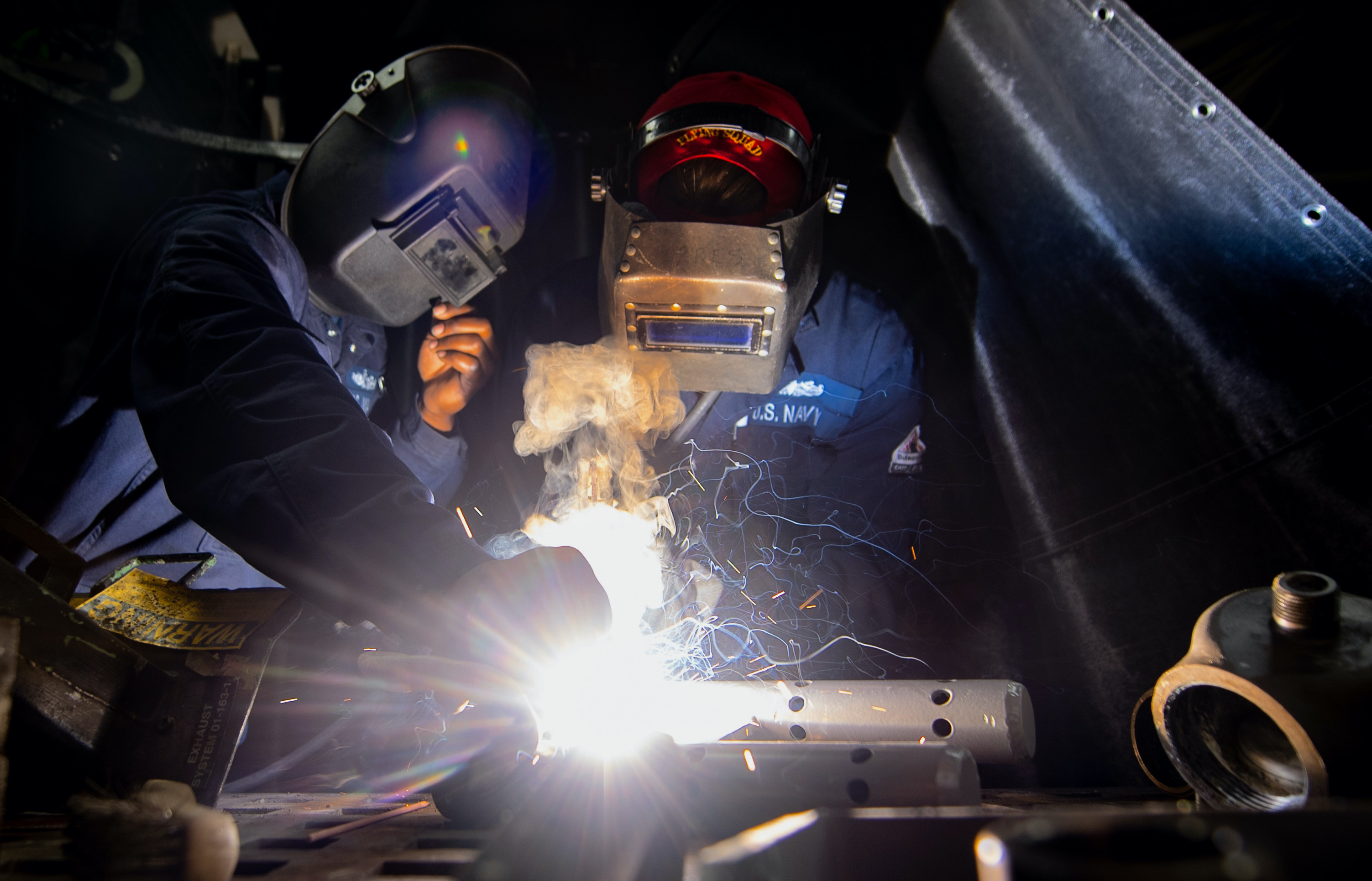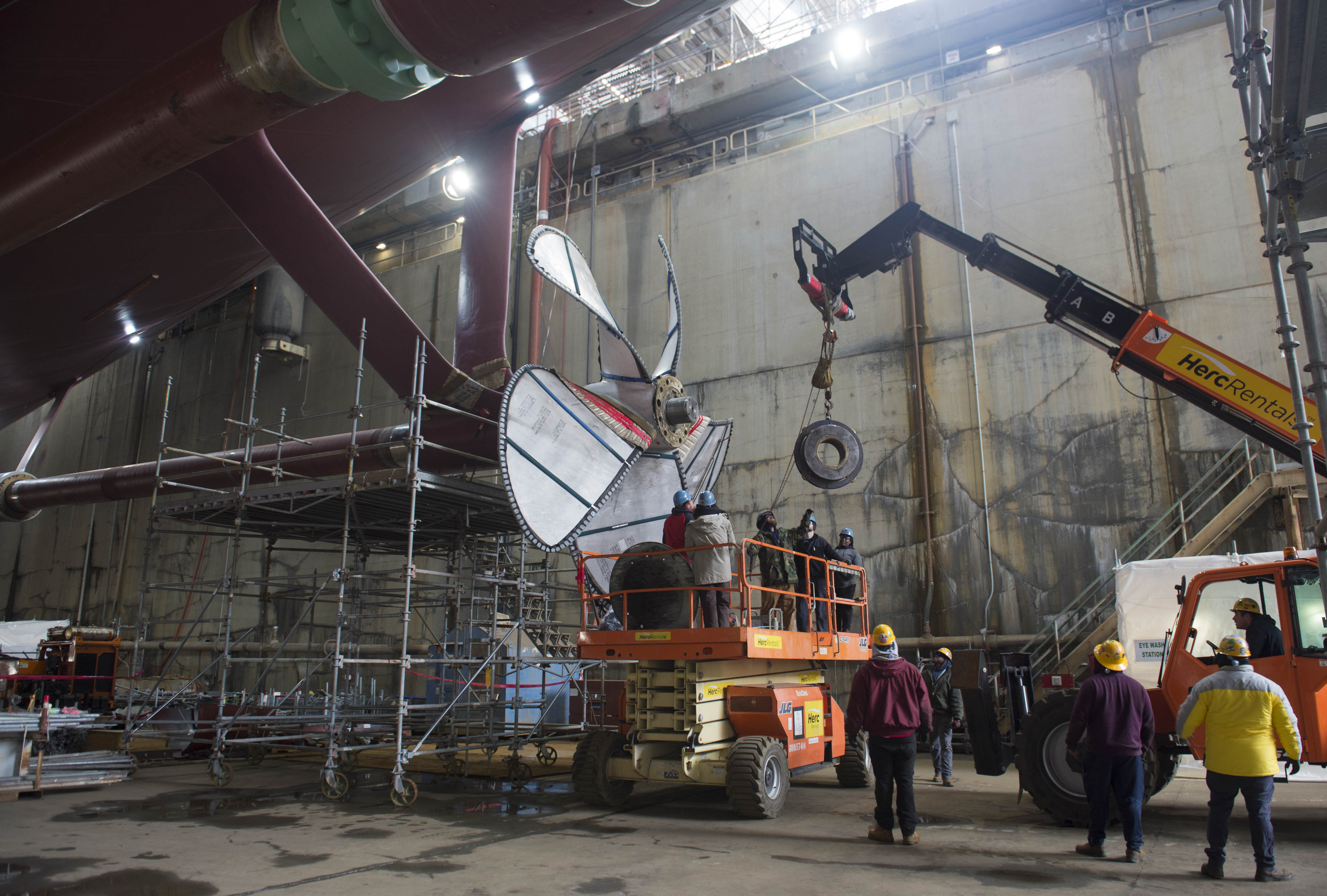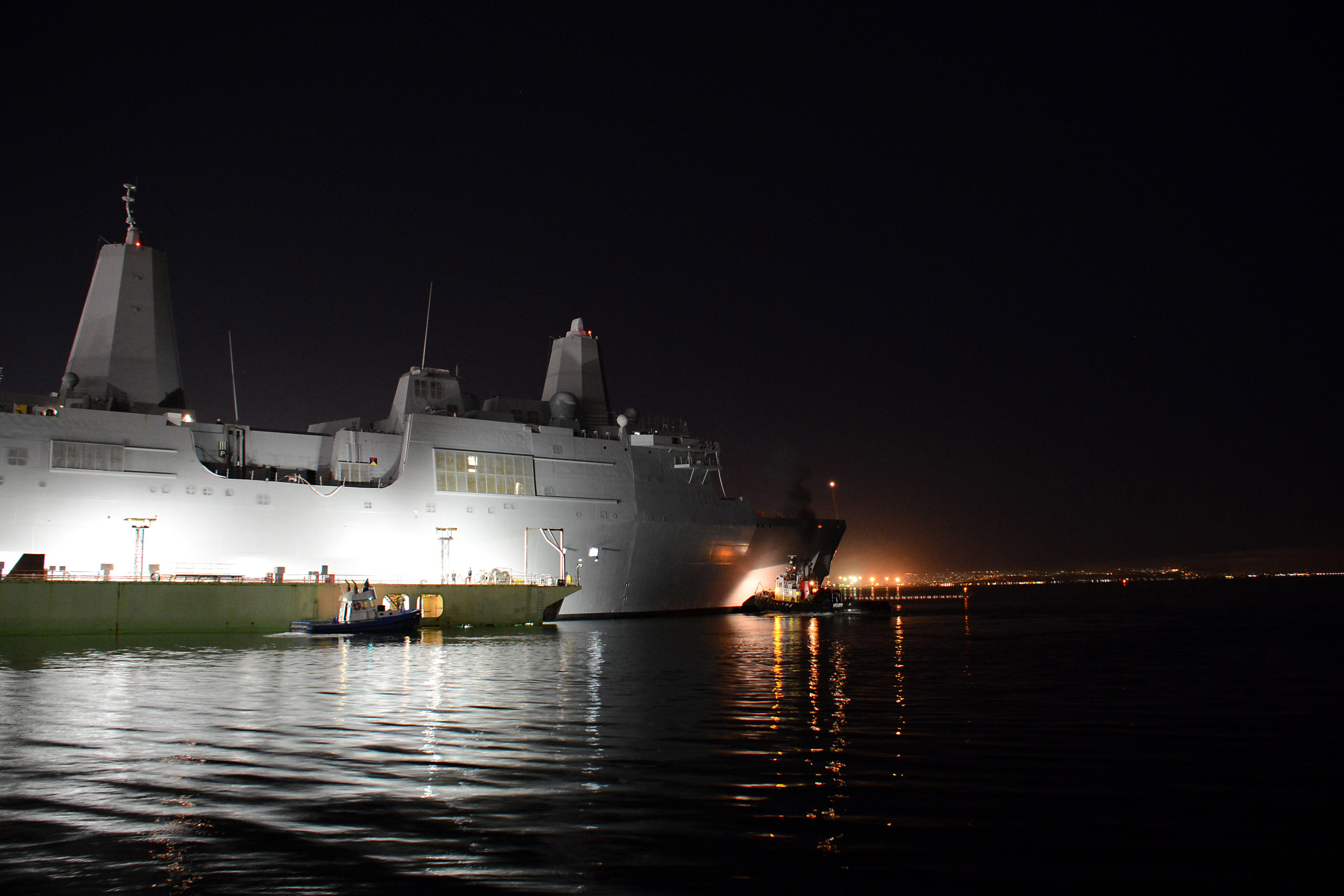
The Navy has long struggled to understand its sustainment costs and how they affect budget plans in the near- and long-term, but an intensive effort is underway to get a better grasp on where those costs are in the budget, who is responsible for paying them and how they affect future plans to grow the fleet.
The service created a Sustainment Program Baseline effort that’s in the early stages of trying to identify all the spending that goes into sustaining the ships, submarines, aircraft and other systems the Navy operates, Vice Adm. Michael Moran, the principal military deputy for the assistant secretary of the navy research, development and acquisition, said Wednesday. Without understanding what funding is required, the Navy can’t take steps to find savings or to ensure the most-needed readiness drivers are prioritized in future budgets, he said.
The need for this kind of effort was highlighted in the most recent long-range shipbuilding plan, which projects from Fiscal Year 2022 out through 2051.
The previous long-range plan – which outlines FY 2020 through 2049 – showed the fleet hitting 355 ships at the end of the plan and costing $55.5 billion a year to sustain in manpower, operations and ship maintenance costs. This only looks at the ships, not the aircraft or other activities that support them.
In the FY 2022 plan, the fleet reaches 405 battle force ships by the end of the plan but costs nearly $130 billion a year – 50 more ships but well over double the price tag.
When the plan was first released, a senior Navy official said the new model amounted to a 2.1 percent increase for inflation plus a 2 percent increase for real growth in the costs for manning, operations and maintenance.
Navy spokesman Capt. Danny Hernandez told USNI News this week that the Navy had previously followed the Pentagon’s model of just increasing sustainment costs to rise with the rate of inflation, but the FY 2022 plan used a different model to project costs.
The FY 2022 long-range shipbuilding plan’s “sustainment requirements project increased cost growth in the operations, maintenance and manpower accounts. The rate used for sustainment cost projections are based on historical returns and assumed to be above the Office of the Secretary of Defense (OSD) inflation rate used in the FY20 report. The FY22 sustainment costs in the Future Years Defense Plan are funded in the Department’s top line,” he said.

Moran, speaking Wednesday at a virtual event hosted by the American Society of Naval Engineers, said in response to a question from USNI News that “we have models, we have tools that are in place; I don’t think they’re sufficient to give us the outcome from a sustainment perspective that we absolutely have to have.”
“The Sustainment Program Baselines are going to get us the detail we need. So they’re in their infancy, but we have a lot of the data. So now it’s just really getting back to looking at the data from a transparent perspective and really truly understanding it,” he continued.
“One of the challenges we have – and we certainly saw this when we did F-18, and that was our first really hard look… there are 14 different lines of accounting that go into sustainment, and each one of those has multiple different owners and a different process to establish that requirement, that resource for each fiscal year. So what we’re really trying to get our head around is, what are all those different lines of accounting, what are they responsible for, who is the accountable party for them, and are they right. And certainly we learned a lot on F-18, and we’re applying that across the rest of the force, and we’re really better understanding how the money that is necessary to sustainment is allocated.”
Moran noted during his opening remarks that the Navy has a good methodology and a cadre of professional cost estimators who understand what it takes to build ships, aircraft, weapons and sensors, but the sustainment piece has long eluded the service.
“We’re spending some energy … to get after that” now, he said, especially in light of the fleet expansion the Navy is planning and the incorporation of unmanned systems for which sustainment costs are not understood at all.
Sustainment Program Baseline began about two years ago in the aviation community, and Moran said the Virginia-class attack submarine program is well into the process and surface ships are starting this process as well.
Without naming the program, he said in one case the Navy has realized it was “paying a fortune” to replace parts that were failing sooner than expected. The Navy kept buying new parts and no one realized what was happening until the entire community came together – operators, program managers, budgeters – and realized what was happening. Spending money up front to get the expected reliability out of the parts ended up being a much more cost-effective solution and increased operational availability, but that kind of revelation can only happen during a comprehensive effort like Sustainment Program Baseline when all the communities that work with, use and pay for a system come together and look at total costs.

Moran said there is a similar effort to have closer collaboration between the requirements, acquisition, budget, research and development, and operational communities as new programs are beginning, too. James Geurts, who last week stepped down as assistant secretary of the Navy for research, development and acquisition after serving in that job since December 2017, had made this a priority, Moran said, and Vice Chief of Naval Operations Adm. William Lescher is continuing the drive for better collaboration between the requirements side – OPNAV N9, N4 and N2/N6 at the Pentagon – and the acquisition community and systems commands.
“We just can’t do programming and budgeting in isolation and then throw it over the fence to execution; we’ve got to close that gap,” Moran said.
“That relationship is getting stronger and stronger.”
Moran spoke several times about the need to reinvigorate the engineering community and do solid engineering up front, as systems will need to be increasingly interoperable under the Navy’s Distributed Maritime Operations concept that would net together many ships and aircraft so that any sensor could direct the best shooter to prosecute a target.
“We can no longer have, especially in a Distributed Maritime Operating environment, ships that don’t get the data they need when they need it and where they need it, or airplanes [that don’t get that data] when they check in,” Moran said.
As interoperability becomes an all-important feature for new acquisition programs, Moran said Navy priorities would have to shift.
“If we prioritize cost and schedule how we have in the past over engineering, interoperability and architectures, we will not get any further in what we need to provide that asymmetric advantage,” he said.
To that end, the Navy’s office of the deputy assistant secretary for research, development, test and evaluation is bringing back a chief engineer position to help boost overall interoperability throughout the Navy in all domains. Moran said that position would be empowered with the right authorities to make a difference when it comes to cross-cutting issues like interfaces, standards and protocols.
Moran said it’s been clear over the last year that lawmakers want to see greater up-front investment in new systems to reduce risk before new systems go to sea for testing. He said the Navy is considering more land-based testing, but this kind of rigorous engineering up front would go a long way in boosting interoperability, saving cost down the road and building trust with lawmakers who control Navy spending.





